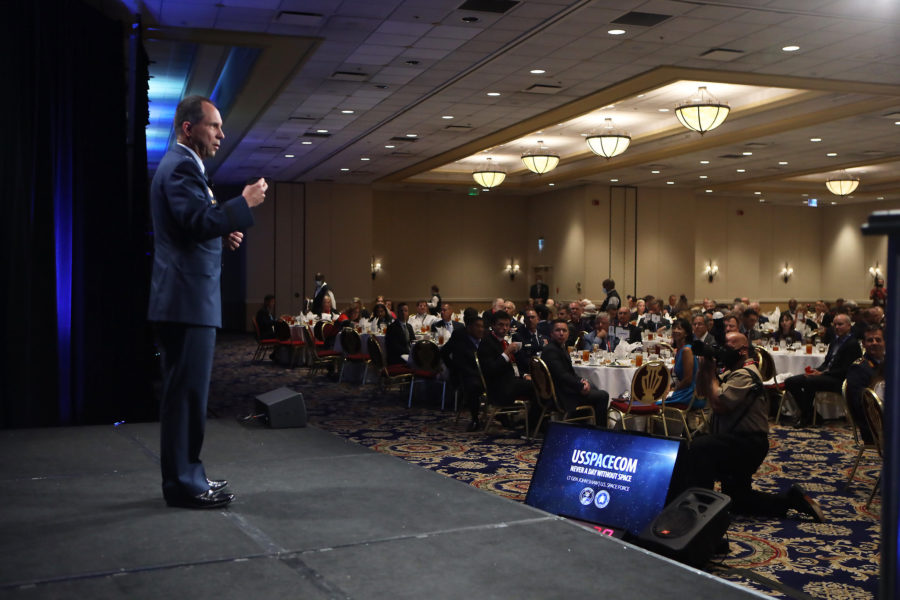The leaders at U.S. Space Command plan to figure out over the long term how to turn their command’s service-affiliated component commands—units from the Air Force, Army, Marine Corps, and Navy—into “functional components.”
The Space Force, on the other hand, already contributes “the lion’s share of what we have,” said U.S. Space Command’s deputy commander, Space Force Lt. Gen. John E. Shaw, during the Mitchell Institute for Aerospace Studies’ virtual Spacepower Forum on Dec. 10.
Shaw said he’d seen “tremendous change” not just within the command but “across the space enterprise” since becoming deputy commander in November 2020. That’s included “integration” of U.S. Space Command and the Space Force into other military services and other combatant commands “and across the department of defense and beyond—allies and partners and other parts of our government.”
Bringing on service-affiliated component commands, such as 1st Air Force with its mission of homeland defense, brings together the abilities that all services have to reach space one way or another.
“For example, the Navy may have some terrific radars on some of its vessels that are capable of reaching up into—beyond—the atmosphere and tracking objects in orbit,” Shaw said. “The Army may have some sort of a similar capability to conduct electromagnetic warfare that could extend into the space domain. Gen. Dickinson needs that capability,” he said, referring to U.S. Space Command’s commander Army Gen. James H. Dickinson.
“We need the capabilities of all services, and we need integration with all of the services, to make sure that we are providing space capabilities to joint warfighters in the terrestrial domains—but also to leverage everything that all of the other services can bring to meet Gen. Dickinson’s missions,” Shaw said.
Formalizing the relationships between the joint-service combatant command and the service-affiliated components will address how they coexist in terms of “giving orders as joint functional components,” Shaw said.
Space Command already has two functional components, Shaw said: Combined Force Space Component Command at Vandenberg Space Force Base, Calif., and Joint Task Force-Space Defense at Schriever Space Force Base, Colo.
After “executing operations day to day through those functional components, we are looking at a way to make this look, maybe, more like other combatant commands where we … have service components also serving as functional components,” Shaw said. “How do we, maybe, look at this long term.”
Dickinson announced U.S. Space Command’s initial operational capability in August.
Addressing when the command might reach full operational capability, Shaw said that likely depends on when it finds out where its permanent headquarters will be. The Defense Department’s Office of Inspector General and Congress’ Government Accountability Office are investigating the Trump administration’s decision to base the command at Redstone Arsenal, Ala.
Editor’s note: This story was updated at 2:20 p.m. Dec. 14 to reflect that Space Command is the organization with two functional components.
